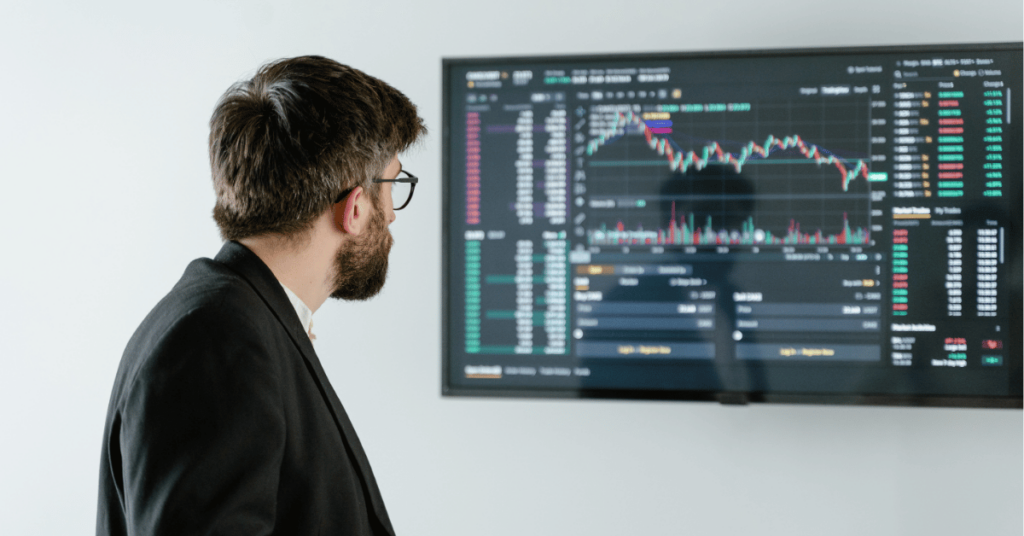
Global markets are on edge. The International Monetary Fund recently slashed its 2025 growth forecast to 2.8%, citing US-China trade tensions and tariff uncertainties. Just last week, Wall Street soared after a temporary tariff truce, only to wobble as fears of a global recession lingered. For traders, this volatility raises a critical question: how do you protect your portfolio in such uncertain times?
In this article, we’ll demystify recessions, assess whether one is looming, and share practical trading strategies to help you navigate the storm—whether you are a beginner or a seasoned retail trader.
Let’s start with the basics. A recession is a significant decline in economic activity that lasts for several months. It’s often marked by falling gross domestic product (GDP), rising unemployment, and reduced consumer spending.
Economists typically define it as two consecutive quarters of negative GDP growth, but it’s more than just numbers—it affects jobs, businesses, and your investments.
Think of the economy as a car engine. When it’s running smoothly, businesses thrive, and markets climb. But if it sputters and stalls for too long, you are in a recession. Key indicators include weak consumer confidence, slowing industrial output, and job losses.
For example, the US reported a GDP contraction of 0.3% in Q1 2025, raising concerns among analysts. Unlike a single bad market day, a recession is a broader, sustained slowdown that can reshape trading opportunities.

So, are we in a recession today? The short answer: not yet, but the risks are growing.
Recent data paints a mixed picture. The IMF and World Bank have cut global growth forecasts, warning of trade disruptions from US-China tariff talks. In the US, recession probabilities have climbed to 37–60%, according to the IMF and JPMorgan, fuelled by weak ADP jobs data showing just 62,000 jobs added in April 2025.
Europe isn’t immune either—Germany’s growth forecast was slashed to 0%, and China’s to 4%.
Yet, there are glimmers of hope. US unemployment remains steady at 4.2%, and markets rallied after the US-China tariff truce in May 2025. Gold prices, a classic safe-haven asset, surged to USD 3,400 per ounce as investors hedged against uncertainty, but no major economy is in a confirmed recession.
The takeaway? We are on shaky ground, and traders need to stay vigilant to navigate what’s ahead.

Recession fears can send markets into a tailspin, and that’s a big deal for your trading portfolio. When investors get nervous, volatility spikes. The S&P 500, for instance, swung wildly after tariff announcements, reflecting uncertainty.
Certain sectors take a hit—consumer goods and technology stocks often slump as people spend less. Unilever, for example, raised prices in 2025 due to tariff-driven cost inflation, which could dent demand and hurt its stock.
On the flip side, safe-haven assets shine. Gold and US Treasuries rally as investors seek stability, while the US dollar strengthens, pressuring emerging market currencies like the Indian Rupee, which hit 85.87 against the dollar recently.
Defensive sectors like utilities and healthcare tend to hold steady, as people still need electricity and medicine.
The risk for traders is clear: if you are overexposed to volatile assets, recession fears could erode your gains quickly. Understanding these dynamics is key to making smarter trading decisions.

Now, let’s get practical. How can you trade smarter amid recession fears? Here are six strategies to protect and grow your portfolio, even in turbulent times.
These strategies aren’t foolproof, but they can help you navigate uncertainty with confidence. The key is to stay disciplined and avoid emotional decisions, even when headlines scream “recession.”
Global recession fears are real, but they are not a certainty. Mixed signals—weak growth forecasts, tariff tensions, and resilient unemployment—mean traders must stay sharp. By understanding what a recession is, recognising its impacts, and using strategies like diversification and stop-loss orders, you can protect your portfolio and even find opportunities in volatility.
VT Markets is here to support you with real-time data, expert analysis, and powerful trading tools to navigate these uncertain times. Ready to take control of your trading journey? Open a live account with VT Markets today and start trading smarter, not harder.